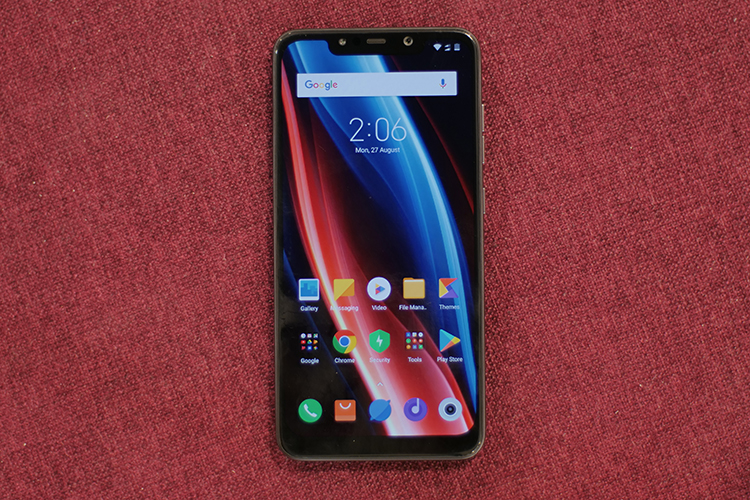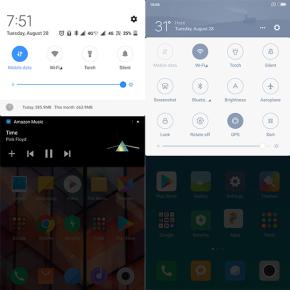
Xiaomi-backed Poco F1 brings an attractive blend of great hardware and dazzling cameras, but another area in which the company has done a noteworthy job is in terms of its user interface. The Poco F1 comes with “MIUI for Poco” which is a revamped version of MIUI specially optimized for the new phone.
MIUI for Poco comes as a fresh breeze of vitality and the redesign not only makes the appearance cleaner and more elegant but also makes the interface more fluid and responsive. But at the same time, the interface is juvenile in front of previous interface which has been mastered over a span of eight years. But if you still can’t decide, we’ve listed out the major difference between MIUI for Poco and MIUI.
User Interface
The major observable difference between MIUI and MIUI for Poco is the how the custom Android skin appears. Noticeably, the biggest highlight of MIUI for Poco which gives it an edge over standard UI is its app drawer. Basically, as part of the new Poco Launcher, which has also been launched on the Google Play Store, the app drawer brings intuitive ways of sorting and managing apps. There are nifty features such as sorting on the basis of the color of the icons as well as the ability to hide apps which you don’t want others to have access to.
MIUI for POCO also gets a much cleaner notification and quick settings panel, but that can be changed using a MIUI theme. Essentially, both the interfaces are more-or-less the same with the Poco F1 version cutting down on the bloatware and other Xiaomi that comes pre-loaded with MIUI.
User Experience
MIUI for Poco is not a mere visual overhaul and Poco claims that the special version has been re-engineered to improve the overall interactability. At the launch event, Poco talked about what it calls a “turbocharged engine” which helps speed up the launching of apps by more than 25%.

The company has also omitted the ornamental yet futile animations – especially icons – to focus on improving the quality of the interface in MIUI for Poco. However, there’s still room for improvement and the animations are not as swift as those on OnePlus’ Oxygen OS and this is because behind the clean facade, lies the same authoritative MIUI. We hope Poco also realizes this and improves this over time.
Regular Updates
Xiaomi does not have a great track record in keeping its MIUI updated to the latest version of Android. This is because the company devotes a great deal of effort to optimizing the interface and adding great new features. However, with focus on the development of MIUI keeps Xiaomi well behind the standard Android update schedule and this has also prompted many Xiaomi fans to move to the Android One devices such as the recently launched Mi A2.

But with the launch of Poco F1, the company has promised that it will release security updates every quarter as well as an update to Android Pie this year itself – although without revealing more details. If Poco manages to reshape the current situation of updates, it is likely to draw more users towards the brand who maintained a distance because of the MIUI’s puffy interface.
Availability of Kernel Source
Xiaomi has a history of preferential treatment to devices when it comes to the release of kernel source codes. These codes are essential for the development of custom ROMs, custom kernels, which in turn can be used to maximize the output performance of a smartphone. After a recent backlash and threatening from the dev community over the violation of General Public License v2 (GPLv2), Xiaomi promised to release kernel sources within three months after the launch of a new smartphone.

Poco, on the other hand, has released the respective code for the Poco F1 only a week following the launch. This kernel source can be used to leverage the smartphone’s great hardware for increased performance. This means that custom ROMs can be officially ported for the Poco F1 and their development can continue for long after Poco stops updating the smartphone.
SEE ALSO: Xiaomi Poco F1 Review: Flagship of the Masses!
MIUI for Poco vs MIUI: It All Boils Down to Preference
While I’ve tried my best to convince you that MIUI for Poco is a big improvement over the traditional interface, the choice between the two is clearly your own. My opinions are biased due to an affinity for stock Android but your expectations may be different and I’d love to hear them.
Lastly, I also wish that Xiaomi allows users to test MIUI for Poco on their Xiaomi and Redmi devices but until that happens, installing the Poco Launcher is a great way of make-believe. Meanwhile, if your planning to buy the Poco F1, you can take a look at our in-depth review.














That animated MIUI icons are a part of default MIUI theme not for Poco F1. It can be used in other Xiaomi’s mobile phones.
That’s what I said, I guess. Poco lacks animations and this helps improve the interface slightly.